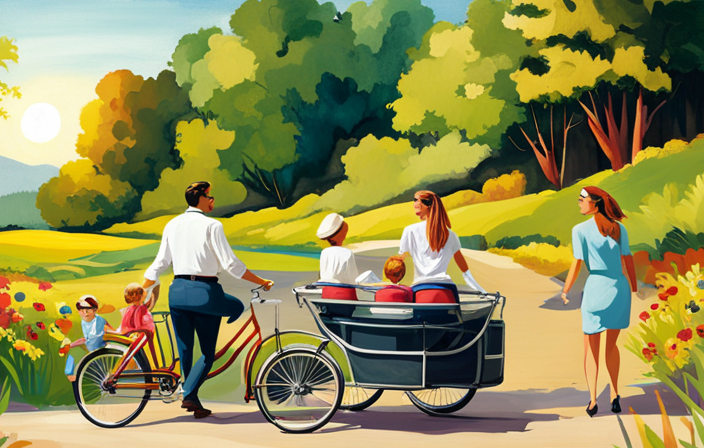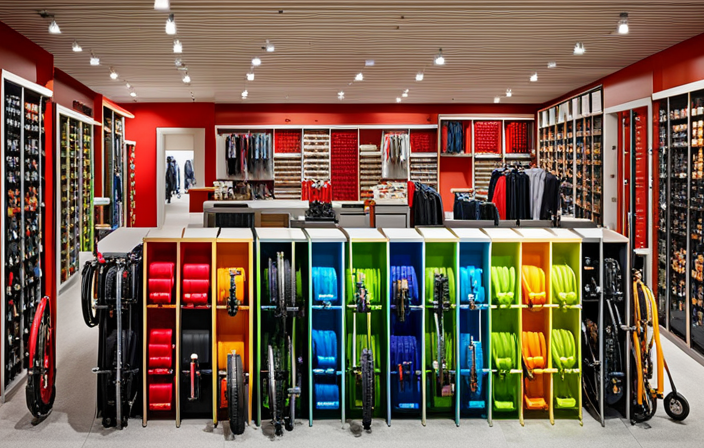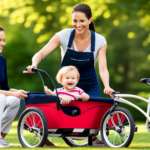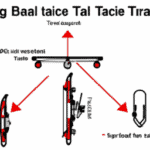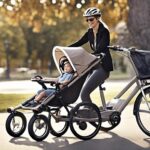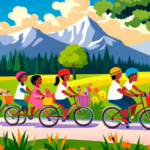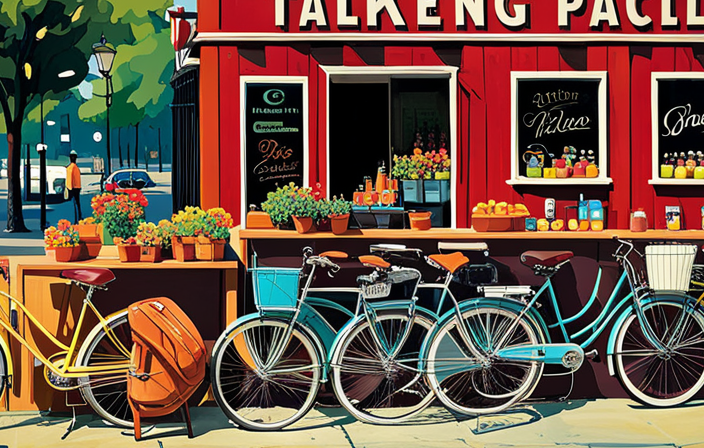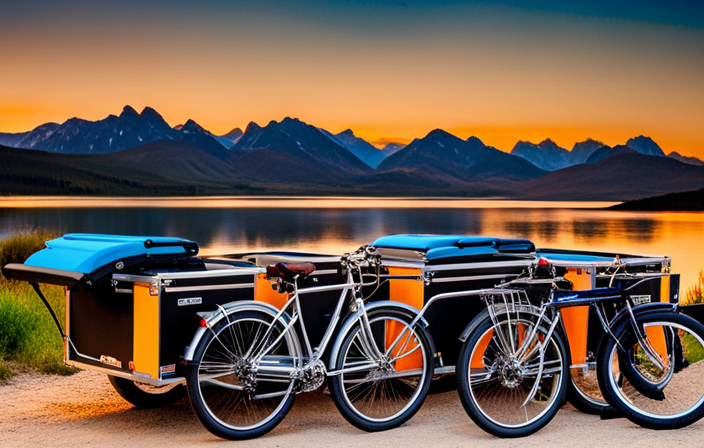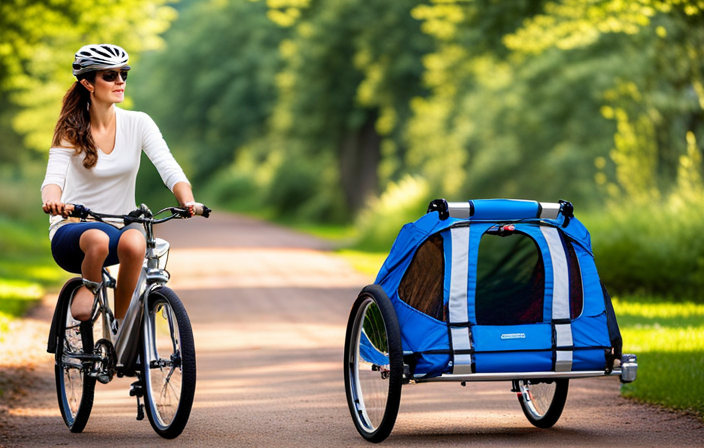As a parent, I comprehend the enthusiasm of wanting to involve your little one in your outdoor escapades. However, when it comes to riding in bike trailers, prioritizing safety is crucial.
So, what age can babies ride in bike trailers? In this article, I’ll share with you the essential safety guidelines, developmental milestones to consider, and tips for choosing the right bike trailer for your baby.
Get ready to embark on thrilling bike rides with your little adventurer!
Key Takeaways
- Consult with a pediatrician before using a bike trailer to ensure personalized guidance based on your baby’s unique needs.
- Choose a bike trailer with secure and cozy seating, a safety harness, and a sturdy and durable frame to provide a safe and comfortable ride for your baby.
- Gradually introduce bike trailer rides by starting with short and easy rides on smooth, well-paved paths close to home, and gradually increasing duration and distance.
- Ensure comfort and protection for your baby by selecting a bike trailer with proper seating, padded seats, a built-in suspension system, and good ventilation. Adjust the harness snugly and regularly inspect the trailer for wear and tear.
Understanding the Safety Guidelines for Bike Trailers
To ensure the safety of your child, make sure to follow the guidelines for bike trailers. Understanding these guidelines is crucial as it helps protect your little one during bike rides. Bike trailers are a great way to enjoy outdoor activities while spending quality time with your child. However, it is important to consider their developmental stages and consult with your pediatrician before introducing them to the bike trailer.
Consultation benefits are immense when it comes to ensuring the safety of your child. Pediatricians are well-versed in child development and can provide valuable insights into when it is appropriate for your baby to ride in a bike trailer. They can assess your child’s physical and cognitive abilities and advise you on the best age to start using a bike trailer. This personalized guidance is crucial as it takes into account your child’s unique needs and abilities.
Understanding the developmental stages of your child is also essential when considering bike trailer safety. Babies and toddlers go through various milestones, both physical and cognitive, that can impact their ability to ride in a bike trailer. For example, their neck and back muscles need to be strong enough to support their head and body while riding.
Consult with Your Pediatrician
Make sure to check with your pediatrician before using a bike trailer. When it comes to the safety of your baby, it’s always best to consult with a medical professional who knows your child’s unique needs.
Bike trailer safety is crucial, as it involves the transportation of your little one while cycling. Your pediatrician can provide valuable guidance and recommendations based on your baby’s specific developmental milestones.
Pediatricians are knowledgeable about the physical and cognitive milestones that babies typically reach at different ages. They can help you determine if your baby is ready to ride in a bike trailer based on their muscle strength, coordination, and ability to sit up unsupported. Additionally, they can assess your baby’s neck strength and overall development to ensure that riding in a bike trailer is appropriate.
Considering your baby’s developmental milestones is essential when it comes to bike trailer safety. Babies develop at their own pace, and it’s crucial to take this into account before introducing them to a bike trailer.
Consider Your Baby’s Developmental Milestones
Take into account whether your little one has reached the necessary physical and cognitive milestones before introducing them to a bike trailer. It is crucial to ensure your baby’s safety and comfort during this exciting outdoor activity. By considering their developmental milestones, you can determine if they are ready for the adventure. Here are some key milestones to consider:
| Milestone | Age Range |
|---|---|
| Able to hold their head up | 3-4 months |
| Sitting without support | 6-8 months |
| Coordination and balance | 10-12 months |
| Walking independently | 12-15 months |
| Understanding basic directions | 18-24 months |
These milestones indicate your baby’s level of physical development, coordination, and cognitive abilities. It is important to wait until they have reached these milestones before introducing them to a bike trailer. This will ensure a safer and more enjoyable experience for both you and your little one.
Now that you have assessed your baby’s developmental readiness, let’s move on to the next important step: ensuring proper seating and harnessing.
Ensure Proper Seating and Harnessing
Ensuring proper seating and harnessing is essential for your baby’s safety and comfort during the bike trailer adventure. When it comes to biking with your little one, it’s crucial to choose a bike trailer that provides a secure and cozy environment. Proper seating ensures that your baby is properly supported and protected from any bumps or jolts along the way. Look for a trailer with a padded seat that offers ample cushioning to keep your baby comfortable throughout the ride.
In addition to proper seating, safety harnessing is another key factor to consider. A reliable safety harness will keep your baby securely in place, minimizing the risk of any accidents or falls. Look for a trailer that features a five-point harness system, which includes straps for the shoulders, waist, and between the legs. This type of harness provides a secure fit and prevents your baby from moving around too much during the ride.
Choose a Bike Trailer with Safety Features
When selecting a bike trailer, it’s important to look for safety features that prioritize your baby’s well-being. Bike trailer safety should be your top priority to ensure a secure and comfortable ride for your little one.
One of the most important features to consider is a sturdy and durable frame. Look for trailers made from high-quality materials that can withstand bumps and jolts on the road.
Additionally, make sure the trailer has a reliable and secure harness system. A five-point harness is ideal as it keeps your baby securely in place, preventing any accidental falls or injuries.
Another important feature to look for is a well-padded seat. This will provide extra comfort and support for your baby during the ride.
Additionally, consider trailers with a built-in suspension system to absorb shocks and create a smoother ride.
Lastly, don’t forget to check for reflective materials and safety flags that improve visibility on the road.
With these essential safety features in place, you can confidently start with short and easy rides to introduce your baby to the joy of biking.
Start with Short and Easy Rides
To begin, it’s best to start with short and easy rides to help you and your baby get comfortable with biking together. When it comes to bike trailer safety, choosing the right bike trailer is crucial. Look for a trailer that is sturdy, has a low center of gravity, and is equipped with safety features such as a five-point harness and a roll cage. These features will provide added protection for your little one during your rides.
When starting out, opt for rides that are close to home and on smooth, well-paved paths. This will allow you to focus on getting used to riding with the trailer and getting a feel for how it handles. Start with shorter rides, around 10-15 minutes, and gradually increase the duration and distance as you and your baby become more comfortable.
During these initial rides, pay close attention to how the trailer attaches to your bike and ensure that it is securely fastened. Take the time to familiarize yourself with the trailer’s features, such as the brakes and suspension, and make sure they are functioning properly.
By starting with short and easy rides, you can build confidence in both yourself and your baby. This will lay the foundation for longer and more adventurous rides in the future.
Gradually Increase the Duration and Distance
Start with shorter rides, gradually increasing the duration and distance as you and your baby become more comfortable. When it comes to biking with your baby in a trailer, it’s important to take things slow and adjust to longer rides over time. This is especially true when it comes to increasing the distance you travel. You want to ensure that both you and your baby are prepared for the extended time spent on the bike.
To begin, start with shorter rides around your neighborhood or local park. This will allow you to get a feel for how your baby reacts to being in the trailer and how they handle the movement of the bike. As you both become more at ease, gradually increase the duration of your rides. Instead of just going around the block, venture out a little further each time.
Once you and your baby are comfortable with longer durations, it’s time to start increasing the distance you travel. Again, take it slow and steady. You don’t want to overwhelm your baby or push them too far too soon. Pay attention to how they are reacting and adjust accordingly.
Monitor Your Baby’s Comfort and Well-being
As you gradually increase the duration and distance of your baby’s bike trailer rides, it’s important to closely monitor their comfort and well-being. Ensuring that your little one is safe and comfortable during these rides is crucial for their overall enjoyment and for your peace of mind.
Here are four key factors to consider when monitoring your baby’s comfort and well-being in a bike trailer:
-
Proper seating position: Make sure your baby is securely strapped into the bike trailer and that they are sitting in an upright position. This will provide them with better support and prevent any discomfort or strain.
-
Cushioned seating: Choose a bike trailer with adequate padding to ensure your baby’s comfort throughout the ride. A well-padded seat will help absorb any bumps or vibrations and provide a smoother ride.
-
Adjustable harness: Check that the harness is properly adjusted to fit your baby snugly and securely. This will prevent them from shifting or sliding during the ride and ensure their safety.
-
Ventilation and airflow: Ensure that the bike trailer has proper ventilation to keep your baby cool and prevent overheating. Look for trailers with mesh panels or windows that allow for good airflow.
Be Mindful of Weather Conditions
Be sure to check the weather forecast before taking your little one out for a bike trailer ride. Dressing appropriately for different weather conditions is essential to ensure your baby’s comfort and safety.
The impact of weather on your baby’s well-being cannot be underestimated. In hot weather, dress your baby in lightweight, breathable clothing and a wide-brimmed hat to protect them from the sun. Apply sunscreen to any exposed skin and consider using a sunshade on the trailer to provide additional shade.
In colder weather, layer your baby’s clothing to keep them warm, and don’t forget to cover their extremities, such as hands and feet. Ensure they are wearing a properly fitting helmet at all times.
Remember that extreme weather conditions can make it uncomfortable or even dangerous for your baby, so it’s crucial to assess the situation before heading out. Stay alert and follow traffic rules to keep your baby safe on the road.
It’s important to be mindful of weather conditions during your bike trailer rides to ensure that your little one remains comfortable and protected.
Stay Alert and Follow Traffic Rules
Stay focused and remember to obey traffic rules while riding to ensure the safety of yourself and others on the road. As a knowledgeable and authoritative rider, it is essential to understand and follow traffic rules at all times. Staying alert and adhering to these rules can significantly reduce the risk of accidents and keep everyone safe.
First and foremost, always follow the designated bike lanes or paths, if available. This ensures that you are in the appropriate area and minimizes the chances of colliding with other vehicles. Additionally, it is crucial to be mindful of traffic signals, such as stop signs and traffic lights. Treat them as you would if you were driving a car, coming to a complete stop when necessary and proceeding when it is safe to do so.
Furthermore, be aware of your surroundings and constantly scan for potential hazards. This includes checking your blind spots, looking out for pedestrians, and anticipating the actions of other drivers. By staying alert and proactive, you can react quickly and avoid dangerous situations.
Now that we have covered the importance of traffic rules and staying alert, let’s move on to the next section: packing essential items for your baby’s ride.
Pack Essential Items for Your Baby’s Ride
Make sure you’ve packed all the necessary items for your baby’s ride, like diapers, wipes, and a bottle. When it comes to taking your baby on a bike ride, it’s important to be prepared. Here are four essential items you should have with you:
-
Diapers: It goes without saying that you’ll need to have plenty of diapers on hand. You never know when your little one might need a change, so make sure you have enough to last the duration of your ride.
-
Wipes: Accidents happen, and having wipes on hand will make cleaning up a breeze. Whether it’s a spill or a messy diaper, wipes are a must-have item for any bike ride with a baby.
-
Bottle: Keeping your baby hydrated is crucial, especially during physical activity. Make sure you have a bottle filled with water or formula to keep your little one happy and hydrated throughout the ride.
-
Snacks: Depending on the length of your ride, you may want to bring along some snacks for your baby. Choose easy-to-eat, age-appropriate snacks that will keep your baby satisfied and energized.
Take Regular Breaks and Check on Your Baby
During your bike ride, it’s important to take regular breaks and check on your little one to ensure their comfort and safety. Regular breaks give your baby a chance to stretch, relax, and take a break from the motion of the ride. It also allows you to monitor their well-being and address any needs they may have. Remember, their comfort is paramount, so make sure they are properly secured in the bike trailer and have enough padding to support their head and body.
When you take a break, take a moment to check on your baby. Look for signs of discomfort, such as fussiness or restlessness. Ensure that their helmet is properly fitted and that the straps are snug but not too tight. Check that their clothing is appropriate for the weather and adjust it as necessary. It’s also a good time to offer them a drink or a snack, especially on longer rides.
By taking regular breaks and checking on your baby, you can ensure their well-being throughout the ride. It’s important to be attentive and responsive to their needs.
In the next section, we will discuss how to maintain the bike trailer and check for any signs of wear and tear, ensuring both your baby’s safety and the longevity of the trailer.
Maintain the Bike Trailer and Check for Wear and Tear
Regular maintenance is essential for ensuring the safety and longevity of your bike trailer. Taking the time to regularly check your trailer for any signs of damage or wear and tear is crucial in order to prevent any accidents or malfunctions while on the road.
Start by inspecting the frame of the trailer for any cracks or dents. Pay close attention to the wheels and ensure that they are properly inflated and securely attached. Check the brakes to make sure they are functioning properly and not worn out. It is also important to examine the fabric of the trailer for any tears or fraying that could compromise its structural integrity.
In addition to regular inspections, it is recommended to clean your bike trailer after each use. Use a mild soap and water solution to gently scrub away any dirt or debris. This will help to maintain the appearance of your trailer and prevent any corrosion or rust from developing.
Transition to a Bike Seat When Your Baby Is Ready
When your little one is ready, you can easily transition them to a bike seat for a more interactive and enjoyable cycling experience. Making this transition may come with some challenges, but with the right safety precautions in place, you can ensure a smooth and successful transition. Here are three important things to keep in mind:
-
Choose the right bike seat: There are different types of bike seats available, including front-mounted and rear-mounted seats. Consider your child’s age, size, and comfort when selecting the appropriate seat. Look for seats that have safety harnesses, adjustable footrests, and a sturdy attachment system.
-
Practice balance and coordination: Riding in a bike seat requires your child to develop balance and coordination skills. Start by practicing in a safe, controlled environment, such as an empty parking lot or a quiet street. Encourage your child to hold onto the handlebars and keep their feet on the footrests to maintain stability.
-
Follow safety precautions: Always prioritize safety when transitioning your child to a bike seat. Ensure that the seat is properly installed and securely attached to your bike. Make sure your child wears a properly fitted helmet and teach them the importance of holding onto the handlebars and staying seated throughout the ride.
By following these guidelines, you can overcome transition challenges and create a safe and enjoyable cycling experience for your little one.
Now, let’s move on to the next section and discover how you can enjoy the adventures with your little one.
Enjoy the Adventures with Your Little One
Now, let’s explore how you can fully embrace the adventures with your little one and create lasting memories together.
As a parent, I understand the importance of engaging in adventurous activities with your child. Not only does it provide an opportunity for bonding experiences, but it also promotes their development and fosters a sense of exploration.
When it comes to adventurous activities, there are countless options to choose from. Whether it’s going on a nature hike, exploring a new playground, or even taking a bike ride together, each experience can be a chance to create lasting memories. Engaging in these activities not only allows you to spend quality time with your little one, but it also helps them develop important cognitive and physical skills.
One of my favorite bonding experiences with my child is going on bike rides. It’s an activity that allows us to explore our surroundings while enjoying the fresh air and beautiful scenery. To ensure their safety, I always make sure to use a bike trailer specifically designed for children. This way, I can rest assured that my little one is secure and comfortable throughout the ride.
Incorporating adventurous activities into your routine not only strengthens the bond between you and your child but also creates opportunities for them to learn and grow. So, don’t be afraid to step outside of your comfort zone and embark on new adventures together. The memories you create will be cherished for a lifetime.
Frequently Asked Questions
Can I use a bike trailer for a newborn baby?
Yes, you can use a bike trailer for a newborn baby. However, it is essential to be aware of the age restrictions set by the bike trailer manufacturer.
Newborns require extra support and protection, so make sure the bike trailer is designed to accommodate their needs. Always follow the manufacturer’s guidelines regarding age, weight, and development milestones to ensure the safety and well-being of your baby while using a bike trailer.
Are there any weight restrictions for using a bike trailer?
Weight restrictions and age restrictions are important factors to consider when using a bike trailer. It is crucial to know the maximum weight capacity of the trailer to ensure the safety of your child.
Additionally, manufacturers often provide age recommendations for using bike trailers, taking into account the child’s physical development and ability to sit upright.
How do I ensure that my baby is properly secured in the bike trailer?
To ensure that my baby is properly secured in a bike trailer, I follow these safety precautions.
First, I always use a properly fitting helmet for my baby and secure it correctly.
Next, I make sure to fasten the harness straps snugly around my baby’s shoulders and waist.
Additionally, I ensure that the trailer is properly attached to my bike and that all safety features, like reflectors and lights, are in place.
What safety features should I look for when choosing a bike trailer?
When choosing a bike trailer, it’s crucial to prioritize safety features. Did you know that over 75% of bike trailer accidents involve head injuries? To prevent this, look for a trailer with a sturdy frame and a secure harness system. Make sure the trailer has a roll cage or reinforced sides for added protection.
Additionally, opt for trailers with reflective materials and a flag for increased visibility on the road. Always remember to properly secure your baby with a five-point harness system.
How do I know when my baby is ready to transition from a bike trailer to a bike seat?
When transitioning from a bike trailer to a bike seat, it’s important to ensure a safe and comfortable switch for your baby.
Start by considering their age, weight, and ability to sit upright. Look for a bike seat that provides proper support and has adjustable features to accommodate your growing child.
Additionally, choose a seat that meets safety standards and has a secure harness system. Always follow the manufacturer’s guidelines for installation and usage.
Conclusion
In conclusion, riding in a bike trailer with your baby can be a fun and adventurous experience, as long as you prioritize safety. Remember to consult with your pediatrician and consider your baby’s developmental milestones before embarking on any bike rides.
It’s important to ensure proper seating and harnessing, as well as choosing a bike trailer with safety features. One interesting statistic to note is that according to a study by the National Highway Traffic Safety Administration, wearing a properly fitted helmet can reduce the risk of head injury by 85%. So don’t forget to always have your little one wear a helmet while riding in a bike trailer.
Enjoy the rides and create lasting memories with your little one!
